Slavery in Minnesota
The full story of slavery in Minnesota requires confronting uncomfortable truths, including the presence of enslaved people in the territory long before statehood, the complicity of powerful white institutions, the suppression and distortion of historical memory, and the enduring economic benefits reaped by corporations and families that once profited from forced Black labor. It is a history buried not only in the soil but in the ledgers, policies, and social architecture of a state that has not fully reckoned with its past.
Before Minnesota became a state in 1858, it was part of the Northwest Territory and later the Wisconsin Territory, where the Northwest Ordinance of 1787 nominally prohibited slavery. However, as with many laws in the antebellum period, enforcement was inconsistent and often undermined by local practices and federal policies. U.S. Army officers stationed at Fort Snelling, one of Minnesota’s earliest permanent settlements, routinely brought enslaved Black people with them from southern states, a practice that persisted through the first half of the 19th century.
These individuals lived and labored under bondage in direct contradiction to the prevailing legal standards. Dred Scott, the most infamous enslaved man in Minnesota’s history, was brought to Fort Snelling in the 1830s by his enslaver, Dr. John Emerson, a military surgeon. Scott’s years of residence in what was then free territory later formed the basis of his landmark legal battle for freedom. The case, Dred Scott v. Sandford, ultimately reached the U.S. Supreme Court, which ruled in 1857 that no Black person, free or enslaved, could be a citizen of the United States. The decision invalidated years of precedent and inflamed sectional tensions, pushing the nation closer to civil war. Minnesota, far from being a neutral ground, was thus directly implicated in one of the most consequential legal decisions in American history.
In addition to Fort Snelling, other early settlements in Minnesota included individuals and families who were either slaveholders themselves or complicit in systems that profited from slavery. Wealthy southern tourists often traveled to Minnesota in the summer months, bringing their enslaved servants with them under the pretense of medical or recreational excursions. Towns like Stillwater and St. Paul saw an influx of such visitors who flouted local laws with little consequence.
Local business owners and politicians often looked the other way, unwilling to challenge the economic benefits brought by southern money. Moreover, a review of census records and personal correspondence from the era reveals multiple instances where enslaved people were held illegally in Minnesota without enforcement of their supposed legal protections. These acts of complicity underscored a broader pattern of racial subjugation that existed despite the state’s image as a bastion of liberty.
The Minnesota slave economy, though never as large or industrialized as those in southern states, still played a meaningful role in shaping the region’s economic foundations. Timber, railroads, fur trading, and the early banking sector in Minnesota were all intricately tied to capital and credit systems fueled by slavery.
Many of the goods exported from the South—including cotton, sugar, and tobacco—were processed, insured, or financed by institutions that operated in the North. Minnesota-based companies such as banks, shipping firms, and insurance agencies profited from underwriting or transporting goods made by enslaved people. Wealth generated from these indirect economic channels was invested in real estate, infrastructure, and commerce in Minnesota, building the foundation for many of the state’s early cities and industries.
St. Paul, as the state capital and economic hub, attracted entrepreneurs and businessmen who maintained commercial ties to southern plantations. These individuals facilitated investments and trade deals that made them indirect beneficiaries of the slave labor economy. While they may not have held slaves in Minnesota, their fortunes were inextricably linked to the productivity and brutality of southern enslavement.
In some cases, wealth accumulated from the slave trade was used to fund Minnesota railroads and urban development projects. Investors in southern agriculture who moved north after the Civil War often brought their capital with them, building new enterprises in Minnesota that thrived on the profits of slavery. This kind of financial laundering allowed slavery’s economic tentacles to extend far beyond its geographical origins.
The slavery industrial complex in Minnesota also included cultural and educational institutions. Religious denominations that held sway in Minnesota—particularly the Episcopal Church and Presbyterian congregations—had national bodies that accepted donations from slaveholding parishioners. Some churches in Minnesota were built with funds tied to slave labor.
Educational institutions, including those that would later become part of the University of Minnesota system, benefited from endowments and contributions connected to slaveholding families or industries that profited from slavery. As with many universities across the North, Minnesota’s academic institutions participated in a web of moral ambiguity, where intellectual enlightenment coexisted with tacit acceptance of racial oppression.
Despite the suppression of slavery’s visibility in Minnesota, there were enslaved individuals whose stories endure. The narratives are fragmentary—kept alive by oral tradition, court records, and a few preserved personal writings—but they offer vital glimpses into the human cost of the state’s complicity. Dred and Harriet Scott, whose years at Fort Snelling included forced labor, family-building, and the eventual pursuit of freedom, have become central figures in Minnesota’s hidden history.
Harriet Scott, often overshadowed in historical accounts, was an enslaved woman of profound resilience who helped raise her family in the shadows of military dominance and legal ambiguity. Other less-documented enslaved individuals—such as Rachel, an enslaved woman sold between military officers, or William, an enslaved man forced to work as a house servant in St. Paul—lived in precarious circumstances where freedom was a legal abstraction, not a lived reality.
The Civil War, while ending legal slavery, did not dismantle the structures that upheld racial exploitation. Following the war, Minnesota saw the emergence of new systems of racial exclusion. Black laborers, migrants, and veterans faced discrimination in housing, employment, and education. The Freedmen’s Bureau, active in the immediate postwar years, maintained some presence in northern states to support formerly enslaved people who had migrated for opportunity.
In Minnesota, however, support services were limited, and Black families often found themselves at the mercy of local hostility. Though the state ratified the 13th, 14th, and 15th Amendments, its enforcement of civil rights laws was uneven. Segregation in schools and neighborhoods, exclusion from trade unions, and racist violence persisted throughout the late 19th and early 20th centuries.
Notable Black abolitionists and civil rights leaders emerged from Minnesota’s relatively small but resilient African American population. Robert Hickman, a formerly enslaved man who led the “Pilgrims of the Underground Railroad” to St. Paul in the 1860s, helped establish Pilgrim Baptist Church, one of the oldest African American congregations in the state. The church became a hub of Black cultural life and civil rights advocacy.
Nellie Francis, a suffragist and anti-lynching activist, led campaigns against racial discrimination in housing and public accommodations in the early 1900s. Her 1920 Anti-Lynching Bill, which she helped draft, was one of the earliest legislative attempts in Minnesota to address racial terror. Another figure, Clarence Wigington, the first African American municipal architect in the U.S., left a legacy of public buildings in St. Paul that stand as monuments to Black excellence and perseverance.
The 20th century saw continued struggles for racial equality in Minnesota. The civil rights movement touched cities like Minneapolis and Duluth, where racial disparities were exacerbated by redlining, police violence, and employment discrimination. In Duluth, the 1920 lynching of three Black circus workers falsely accused of rape marked one of the darkest moments in Minnesota’s racial history. The violent spectacle drew thousands of white spectators and left a wound that the city would struggle to acknowledge for decades. Civil rights laborers like Mahmoud El-Kati, Josie Johnson, and the Minnesota chapter of the NAACP played pivotal roles in confronting systemic racism through education, policy reform, and grassroots organizing.
Even today, corporations with historical roots in slavery continue to operate in Minnesota. Companies that evolved from insurance firms, railroads, or banks tied to the slave economy have rebranded themselves or merged into modern financial institutions. Some of these entities have yet to fully disclose or atone for their historical connections to slavery. Calls for corporate accountability have grown in recent years, particularly following the murder of George Floyd in Minneapolis in 2020. The event reignited national debates on racial justice and exposed the deep-seated inequalities that persist in Minnesota, often under a veneer of liberal progressivism.
The murder of George Floyd was not merely a tragedy; it was a clarion call that underscored the unresolved legacy of slavery in Minnesota. The city where he died became the epicenter of a global reckoning on racial violence and historical injustice. Protesters filled the streets, not just in outrage over one man’s death, but in protest of a system that had devalued Black life for centuries. The outcry that followed forced many Minnesotans to confront the uncomfortable truth that the state’s history is not immune from America’s original sin.
The systemic architecture of racial oppression in Minnesota did not dissolve with the abolition of slavery but rather adapted to new legal frameworks. Slavery’s afterlives manifested in local policies, corporate growth, neighborhood boundaries, and the criminal justice system. One case study that vividly illuminates the post-slavery racial order in Minnesota is that of the Rondo neighborhood in St. Paul. Once a thriving Black cultural and residential district, Rondo stood as a powerful example of Black resilience and institution-building in the face of exclusion. Its destruction in the 1950s and 1960s under the guise of federal highway construction—namely Interstate 94—reveals a structural through-line that connects slavery-era economic dispossession to modern forms of Black land loss and community erasure.
Founded by African Americans migrating northward during and after the Civil War, Rondo became home to educators, musicians, church leaders, and business owners who carved out a self-sustaining enclave despite widespread segregation. Black residents, barred from accessing mortgages or loans in most parts of the Twin Cities due to redlining and racially restrictive covenants, concentrated in Rondo where mutual aid and cultural capital helped preserve their autonomy. However, as federal urban renewal policies were rolled out, Rondo was deliberately selected for demolition to make way for the new interstate system—an act that destroyed over 600 Black homes and displaced thousands of residents. The justification offered by city planners was efficiency and modernization, but the subtext was racial control. The project mirrored practices common throughout the United States in which urban development became a tool of racial displacement.
This was not a neutral act of progress. The destruction of Rondo was the culmination of decades of marginalization, wherein the same structural forces that once rationalized slavery now rationalized “blight removal” and “economic development.” The wealth lost by Rondo families—estimated in the hundreds of millions in cumulative generational equity—is a modern echo of slavery’s theft of labor, identity, and dignity. The economic violence was no less severe for being carried out by bureaucrats instead of overseers. The trauma remains etched into family histories and community memory, preserved today by efforts such as ReConnect Rondo, which seeks reparative justice through land return, memorialization, and reinvestment.
Minnesota’s complicity in slavery also extends to its industrial base. One prominent example is the milling and grain industry that flourished in Minneapolis during the late 19th and early 20th centuries. Companies like Pillsbury, General Mills, and Cargill rose to global prominence by processing and distributing agricultural commodities, some of which originated from southern plantations even after emancipation. Though slavery was legally abolished in 1865, sharecropping, debt peonage, and convict leasing effectively recreated conditions of forced Black labor throughout the South, particularly in cotton and sugar production. These products made their way into the northern supply chain through brokers and wholesalers. Minnesota corporations thus gained from a labor system that continued to rely on racial subjugation and economic coercion.
Cargill, one of the largest privately-held companies in the world and based in Wayzata, Minnesota, is a particularly complex case. While the company did not exist during the era of legal slavery, its global agribusiness operations are rooted in systems of commodity extraction that benefited from the industrial residue of slavery. Cargill expanded into cotton trading and grain logistics in the postbellum era, partnering with southern suppliers and international producers who often used racially exploitative labor practices. Even into the modern era, Cargill has faced criticism for human rights abuses in global supply chains, including the use of child labor in West African cocoa production and exploitative labor conditions in U.S. meatpacking plants—many of which employ Black and immigrant workers. The ethical continuity from 19th-century racial capitalism to 21st-century labor exploitation remains stark.
Another case study involves the University of Minnesota, one of the state’s flagship institutions. As recently revealed through internal historical audits and advocacy by faculty and student groups, the university has a complex relationship with the legacies of slavery and racial exclusion. While not founded directly with slaveholding funds, the university benefited from land expropriated from Indigenous tribes through the Morrill Land-Grant Acts of the 1860s. These lands were taken violently or through coercive treaties and then sold to finance higher education. The beneficiaries were overwhelmingly white, while Indigenous and Black communities remained systemically excluded.
Additionally, early university leaders and professors expressed support for eugenics and scientific racism in the late 19th and early 20th centuries. Black students were denied admission to dormitories well into the mid-20th century, and courses on African American history were long absent from the curriculum. In more recent decades, student activists have uncovered that donors to university endowments included individuals and families who accumulated wealth through southern plantation ownership, colonial enterprise, and slave-based investments. Efforts to rename buildings and create restorative justice programs continue, but full transparency and redress remain incomplete.
Minnesota’s history of slave-related profiteering is not confined to abstract institutional forces. Specific families that settled in the region brought with them capital derived from slavery. Historical records from county archives and the Minnesota Historical Society show instances where southern slaveholders moved to Minnesota following the Civil War, reinvesting their wealth in land speculation, banking, and manufacturing. In some cases, this wealth was used to found local businesses that remain active today under different names. Their philanthropic descendants became benefactors to churches, museums, and schools—effectively whitewashing the origins of their fortunes while shaping the cultural landscape of the state.
Racial disparities in policing, housing, and health today in Minnesota are not simply contemporary problems; they are manifestations of a historical system built to protect white capital at the expense of Black life. The over-policing of Black communities, school discipline gaps, wage disparities, and incarceration rates are direct descendants of slave patrols, Black Codes, and forced labor camps. The Twin Cities rank among the worst in the nation in terms of Black-white economic disparity, despite their reputation for liberalism. These contradictions are a function of historical amnesia and institutional inertia, where the economic advantages secured through slavery continue to compound, while the disadvantages imposed on Black Minnesotans calcify into generational poverty.
One cannot discuss the present without addressing the events surrounding the murder of George Floyd in 2020. Floyd, a Black man originally from Houston, was murdered by Minneapolis police officer Derek Chauvin during a brutal arrest, filmed and shared around the world. His death sparked an international uprising against police violence, racial injustice, and structural inequality. The rage and grief expressed in Minnesota’s streets were not new; they were centuries in the making. The protests were an eruption of the state’s repressed history, echoing the screams of enslaved people held at Fort Snelling, the cries of displaced Rondo residents, and the wails of children born into systems designed to crush their futures.
The site of George Floyd’s murder—now George Floyd Square—has become a living memorial and protest site, filled with art, activism, and sacred testimony. It stands as a direct challenge to Minnesota’s sanitized narrative about its past. In many ways, it is the antithesis of Fort Snelling’s historic markers or the University’s marble halls—it is raw, alive, and unfiltered. The square is also a call to action, urging Minnesotans to confront the unfinished business of abolition, not just as a historical event, but as a continuing project.
Slavery in Minnesota may have never been as visibly entrenched as in the Deep South, but it was no less real, no less destructive, and no less enduring. Its legacy is not only etched into the state’s past—it shapes its present and threatens to define its future unless actively dismantled. The challenge ahead is not merely educational or symbolic. It requires the redistribution of resources, the rewriting of curricula, reparations for land theft and economic exclusion, and the centering of Black voices in all matters of policy and governance.
To fully understand the reach and persistence of slavery’s legacy in Minnesota, one must examine the legal architecture that has continually reinforced white supremacy. After the abolition of slavery, formal laws did not cease to be tools of racial control. Instead, they evolved. Black Codes and vagrancy laws in the postbellum South were mirrored in the North through policing, zoning, and labor laws that enforced racial hierarchy. Minnesota was no exception. In the late 19th and early 20th centuries, vagrancy laws were used to criminalize Black existence in public spaces. Black men in cities like Minneapolis and Duluth could be arrested for “loitering” or “disorderly conduct” without cause, a tactic used to marginalize their mobility and employment opportunities.
The Minnesota criminal justice system quickly became a mechanism through which the state absorbed and suppressed its growing Black population. As Black families migrated northward during the Great Migration, seeking refuge from the Jim Crow South, they encountered a subtler yet equally insidious system of containment. Though northern employers were happy to utilize Black labor, they resisted integration. Public housing policies and private real estate practices locked Black Minnesotans into designated neighborhoods, often near industrial waste sites, lacking access to quality education or health infrastructure. These redlined districts, carefully documented in Home Owners’ Loan Corporation maps, show a deliberate pattern of disinvestment and racial containment.
Case records from Minnesota’s early 20th-century courts illustrate a racially unequal application of justice. For example, Black men charged with property crimes routinely received harsher sentences than their white counterparts. These sentences often resulted in forced labor in prison industries, echoing slavery in both form and function. Though the Thirteenth Amendment abolished slavery, it explicitly permitted involuntary servitude “as a punishment for crime.” Minnesota prisons used this clause to their advantage, establishing labor programs that disproportionately exploited Black inmates.
The legacies of this penal slavery remain embedded in Minnesota’s correctional institutions today. Black Minnesotans are overrepresented in prison by a ratio far exceeding their percentage of the population. Despite being less than 10% of the state’s population, Black men make up more than 30% of the prison population. These disparities are not coincidences—they are the result of policies, policing practices, and judicial biases designed and inherited from eras shaped by slavery’s logic.
Beyond the legal system, educational segregation and racialized pedagogy played central roles in maintaining white supremacy. Minnesota public schools in the early 20th century were legally desegregated but practically stratified. Black children were funneled into underfunded schools with limited resources, often taught by teachers unfamiliar with or hostile to African American history and culture. History curricula praised abolitionists while erasing the lived realities of the enslaved and the complicity of northern institutions. Textbooks printed well into the mid-20th century perpetuated myths about the “happy slave,” glorified plantation life, and omitted the economic dependence of the North on southern slavery.
Educators who tried to challenge this narrative often faced resistance. A notable case is that of Professor Mahmoud El-Kati, a longtime faculty member at Macalester College in St. Paul. His courses on African American history challenged generations of students to rethink Minnesota’s racial myths and to examine the state’s direct links to the plantation economy. El-Kati’s work, like that of many other Black scholars and educators, has been foundational in pushing Minnesota’s institutions to confront their roles in whitewashing slavery and silencing its modern echoes.
Black labor history in Minnesota is also replete with examples of racial exploitation. From the early 20th century onward, Black workers were hired for the most dangerous and lowest-paying jobs in mining, railroads, foundries, and meatpacking. They were frequently barred from joining labor unions or were relegated to segregated locals with little negotiating power. Despite this, Black workers organized. The Brotherhood of Sleeping Car Porters, the first major Black-led labor union in the United States, had active chapters in Minnesota, particularly in the Twin Cities, where Black porters and railroad employees sought better wages and conditions while facing racial hostility from both management and white unionists.
Their activism was an extension of the broader abolitionist tradition—an assertion of Black personhood and dignity in a society built to deny it. Union leaders like C.L. Dellums and A. Philip Randolph not only advocated for labor rights but tied their demands to the fight against racial segregation and inequality. In Minnesota, Black laborers built networks of mutual aid, cooperatives, and advocacy groups that helped families survive and resist systemic exclusion. These networks laid the foundation for future civil rights organizing and community development initiatives.
The civil rights movement in Minnesota reached critical mass in the 1960s and 70s, but its roots go back to the earliest resistance efforts by Black Minnesotans. Organizations such as the Minnesota NAACP, the Urban League, and the Minneapolis Civil Rights Commission fought to expose and combat police brutality, school segregation, and housing discrimination. In 1967, the Plymouth Avenue uprisings in North Minneapolis—sparked by repeated police harassment and economic despair—brought national attention to the state’s racial tensions. Protesters clashed with law enforcement, businesses were burned, and Governor Harold LeVander called in the National Guard. These events were often portrayed in the media as senseless riots, but they were in fact political rebellions rooted in a long tradition of Black resistance to racialized economic exploitation, much of it descended from slavery.
The story of slavery in Minnesota is thus not one of complete distance or disassociation from the South but of mirrored systems—of quiet complicity, calculated denial, and rebranded oppression. Racialized capitalism continued unabated in Minnesota under new names: redlining instead of plantations, mass incarceration instead of slave patrols, urban renewal instead of auction blocks. The economic extraction of Black labor, the criminalization of Black identity, and the manipulation of legal language all evolved but did not disappear.
The state’s political leadership has long failed to address these historical truths. For decades, Minnesota politicians paid lip service to racial equality while supporting policies that widened the racial wealth gap. Tax structures, school funding formulas, and business development initiatives disproportionately benefited white communities, especially in suburban areas. Meanwhile, investment in Black communities was limited, conditional, and often framed as charity rather than justice. The absence of a formal state-level reparations policy remains a testament to the unwillingness of Minnesota’s political elite to fully reckon with its past.
However, some progress has been made through local and grassroots initiatives. In 2022, the city of St. Paul launched a reparations advisory committee to explore direct restitution for the descendants of enslaved Africans and victims of systemic racism. Inspired by similar efforts in Evanston, Illinois and California, the St. Paul initiative represents an important shift toward historical accountability. Likewise, community groups such as the Racial Justice Network and the African American Leadership Forum have begun organizing educational campaigns, legal advocacy, and economic programs that explicitly acknowledge slavery’s modern legacies.
Universities, churches, and museums have started uncovering uncomfortable truths about their own complicity. The Minnesota Historical Society now hosts exhibitions and archives documenting slavery’s reach into the state’s earliest settlements. Church groups, such as the Minnesota Council of Churches, have issued statements of repentance and engaged in racial truth-telling exercises. Yet the work remains incomplete. Few institutions have committed to reparations or formal acknowledgment of economic benefits derived from slavery. The state’s silence continues to function as a form of erasure.
In examining the lives of those directly impacted by slavery and its aftermath, we must not overlook the contributions of Black women. Often at the forefront of resistance but erased from the historical record, Black women in Minnesota organized churches, ran schools, and built social networks that protected entire communities. From Harriet Scott’s determination to fight for her family’s freedom, to Nellie Francis’s leadership against lynching and housing discrimination, to today’s leaders like Leslie Redmond, who served as the youngest president of the Minneapolis NAACP, Black women have continuously challenged the structures inherited from slavery.
Their work has not only combated state violence but also created alternatives—spaces of joy, healing, education, and economic empowerment. Cultural institutions such as Penumbra Theatre, founded by Lou Bellamy in 1976, have told the stories omitted from textbooks and celebrated the lives obscured by Minnesota’s official histories. These spaces are acts of resistance, reminders that the legacy of slavery is not only one of suffering but of survival and genius in the face of overwhelming odds.
Minnesota’s reckoning with slavery is far from over. It demands a rigorous examination not just of the past, but of the present systems that continue to distribute power and wealth along racial lines. Reparations must include economic investment, educational reform, land return, housing justice, and full representation in civic life. These are not acts of charity but of redress. The myth of Minnesota exceptionalism—that it was somehow insulated from the brutalities of slavery and racism—is a dangerous falsehood. It is a myth that protects privilege, distorts history, and impedes justice.
Slavery may not have taken root in Minnesota’s soil with the same visibility as in Mississippi or Georgia, but its roots were planted nonetheless—watered by denial, fertilized by economic ambition, and shielded by legal loopholes. Those roots have grown into a twisted forest of inequity, from which modern systems of oppression have emerged. Dismantling that forest requires not only cutting down the visible trees of police violence or housing segregation but digging into the soil itself—acknowledging and uprooting the historical foundations of racial exploitation in Minnesota.
The echoes of slavery in Minnesota persist not only in statistics, institutions, or cultural silences but also in the lived experiences of Black Minnesotans who walk each day within systems never designed for their freedom or flourishing. The historical architecture of slavery’s economic and ideological legacy has not collapsed—it has been renovated, rebranded, and reinforced through generations. Its foundation is still intact: a society organized around the theft of Black labor, the policing of Black movement, and the extraction of Black life.
Today, Minnesota is a state both wounded and awakening. The murder of George Floyd did not just expose one officer’s brutality; it unveiled the scaffolding of white supremacy that girds every part of the state’s social order. What happened on the corner of 38th and Chicago was centuries in the making. And it must now become the basis for centuries of unmaking.
A meaningful reckoning with Minnesota’s history of slavery and racial oppression must begin with comprehensive truth-telling. The educational system must no longer treat slavery as a southern phenomenon but instead as a national—and Minnesotan—enterprise. Every high school history class should teach about Fort Snelling as not only a military site but a place where enslaved Africans toiled. Every college curriculum on American history should include the story of Dred and Harriet Scott not as a national legal footnote but as a personal, moral battle rooted in Minnesota soil. The stories of enslaved people brought to Minnesota against their will, of Black towns destroyed by highways, and of wealth built on human exploitation must be made public, institutionalized, and widely understood.
This work of remembrance must also extend to the physical landscape. Statues, monuments, and historical markers must reflect the full spectrum of Minnesota’s past. Where enslaved people lived and worked, where anti-Black violence occurred, and where resistance blossomed, those sites must be named and honored. Fort Snelling’s reconceptualization as a place of conscience rather than solely as a colonial outpost is a step in the right direction, but more must follow. Street names, building names, and public spaces should be reassessed and, where appropriate, rededicated to honor Black resistance and leadership.
Reparative justice, however, cannot be limited to symbolic gestures. Economic reparations—through direct payments, land restitution, education grants, tax relief, and business funding—must become central to Minnesota’s response to its historical crimes. Cities such as St. Paul have initiated conversations on reparations, but these must evolve into state-level commitments backed by legislative will and financial investment. Reparations are not simply about money; they are about restoring what was stolen, correcting what was distorted, and closing the racial wealth gap that slavery, segregation, and systemic racism all created and sustained.
The descendants of enslaved people brought to Minnesota deserve more than recognition; they deserve restoration. That restoration must also include full legal and political inclusion. Voting rights, housing rights, employment protections, and educational access must be more than theoretical. Too often, Black Minnesotans are excluded from decision-making processes in government, corporate boardrooms, and media institutions. Inclusion means more than being present—it means having power. The lack of Black representation in statewide offices, legislative bodies, and executive leadership must be confronted not as a matter of optics but of structural injustice.
Cultural restoration is also vital. The Black cultural institutions of Minnesota—churches, community centers, theaters, schools, and mutual aid organizations—must be funded, expanded, and protected. These institutions are the descendants of abolitionist churches, Underground Railroad safe houses, and Black women’s clubs that fought Jim Crow in its many forms. They are not peripheral to the state’s history; they are at its moral center. The preservation of these spaces is as important as any legislative reform.
Minnesota must also address the modern industries that continue to benefit from the economic patterns laid during the slavery era. As discussed earlier, multinational corporations such as Cargill and General Mills, insurance companies that once underwrote slave ships and plantation risks, and real estate developers that flourished through redlining must be subject to independent historical audits and public disclosure. Corporate transparency about connections to slavery must be followed by concrete contributions to reparations and racial equity efforts. Tax structures and public contracts should prioritize Black-owned businesses and cooperatives as a corrective to centuries of exclusion.
The banking and finance sector in particular has long benefited from racialized inequality. Black families in Minnesota continue to be denied mortgages at higher rates than white families with comparable credit, and wealth accumulation remains a near-impossible task for many Black households because of intergenerational theft. These outcomes are not incidental—they are the direct inheritance of slavery, embedded in credit policy, asset valuation, and institutional risk assessment. Reparative policies must include government-backed equity programs, low-interest loans, and public banks that serve historically excluded communities.
Healthcare disparities are another front in the long war that began with slavery. Enslaved Black people were denied autonomy over their own bodies, experimented on, and left to die from preventable illness. In modern Minnesota, Black residents suffer higher rates of maternal mortality, diabetes, asthma, and heart disease than their white counterparts. Medical racism, from provider bias to unequal access, continues the logic of disposability that slavery inscribed. Universal healthcare access, culturally competent care, and reparative investment in Black health institutions are not luxury reforms—they are human rights demands rooted in historical truth.
The environmental justice movement in Minnesota, too, must reckon with slavery’s legacies. Environmental racism—placing hazardous facilities in or near Black communities, denying infrastructure investment to urban neighborhoods, and excluding Black voices from climate policy—is rooted in the same patterns of spatial control and exploitation that slavery enforced. The deliberate sacrifice of Black land and Black life to serve white economic interests is not a new development; it is an old pattern with modern tools. Clean water, air, and land must be guaranteed not only as a moral imperative but as a redemptive act.
The question for Minnesota today is not whether it was involved in slavery but whether it is prepared to confront and dismantle its ongoing consequences. The answer must not be rhetorical. It must be institutional. It must be legislative. It must be material.
There is no redemption without repair. There is no justice without truth. There is no freedom without memory.
Minnesota has a choice. It can continue to propagate the myth of northern innocence, clinging to sanitized histories that comfort the powerful. Or it can become a national leader in reparative justice by telling the full truth about its past, acknowledging its debt to the descendants of enslaved people, and building systems of equity grounded in that truth.
Across the country, the movement to confront slavery’s legacy is growing. From Georgetown University’s reparations to student-led protests at Ivy League schools, from local truth commissions to international calls for justice, the tide is turning. Minnesota—home to Dred Scott’s captivity and George Floyd’s martyrdom—has a sacred opportunity to lead. Not by offering slogans, but by offering substance. Not by inviting sympathy, but by committing to structural transformation.
To do this work is not to shame the past—it is to liberate the future. Every day that Minnesota delays its reckoning, it deepens the wound. Every day it avoids this history, it repeats it. But every step toward truth and justice plants a seed for a different kind of legacy—one not built on silence, but on solidarity. Not on erasure, but on remembrance.
Slavery in Minnesota did not end in 1865. Its forms changed. Its defenders changed. Its language changed. But its functions persisted. Today, those functions are being named, challenged, and resisted by a new generation of activists, educators, descendants, and leaders who refuse to let history remain buried. Their work, like the work of the abolitionists before them, demands moral courage and political clarity.
The future of Minnesota depends on how it tells its past. Will it continue to pretend slavery was someone else’s sin? Or will it claim the responsibility that comes with truth?
The answer will define not only Minnesota’s history but its soul.

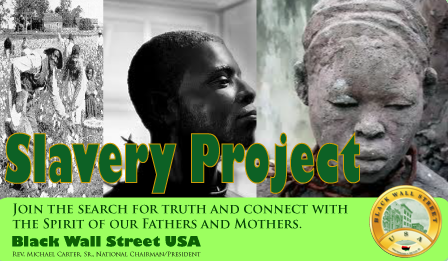
Alabama
Alaska
Arizona
Arkansas
California
Colorado
Connecticut
Delaware
Florida
Georgia
Hawaii
Idaho
Illinois
Indiana
Iowa
Kansas
Kentucky
Louisiana
Maine
Maryland
Massachusetts
Michigan
Minnesota
Mississippi
Missouri
Montana
Nebraska
Nevada
New Hampshire
New Jersey
New Mexico
New York
North Carolina
North Dakota
Ohio
Oklahoma
Oregon
Pennsylvania
Rhode Island
South Carolina
South Dakota
Tennessee
Texas
Utah
Vermont
Virginia
Washington
West Virginia
Wisconsin
Wyoming
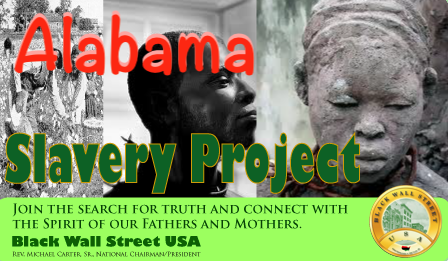
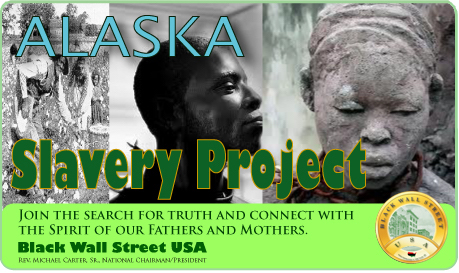



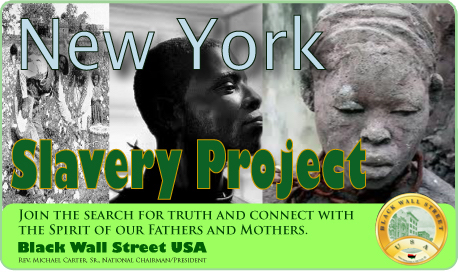

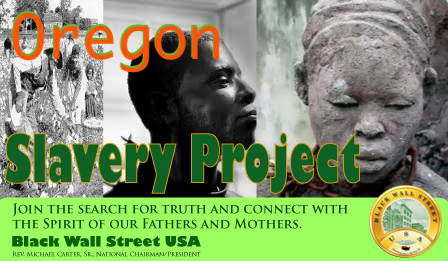
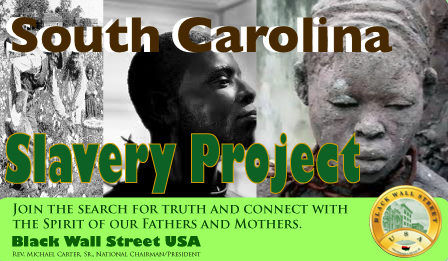
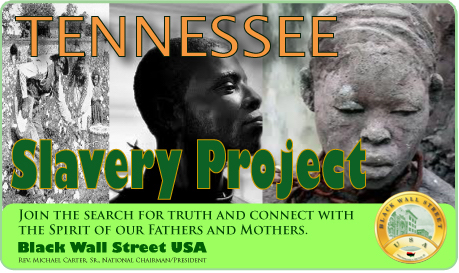
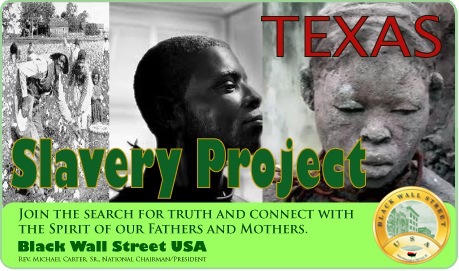



BlackWallStreet.org

Slave Records By State
See: Slave Records By State
Freedmen's Bureau Records
See: Freedmen's Bureau Online
American Slavery Records
See: American Slavery Records
American Slavery: Slave Narratives
See: Slave Narratives
American Slavery: Slave Owners
See: Slave Owners
American Slavery: Slave Records By County
See: Slave Records By County
American Slavery: Underground Railroad
See: American Slavery: Underground Railroad

